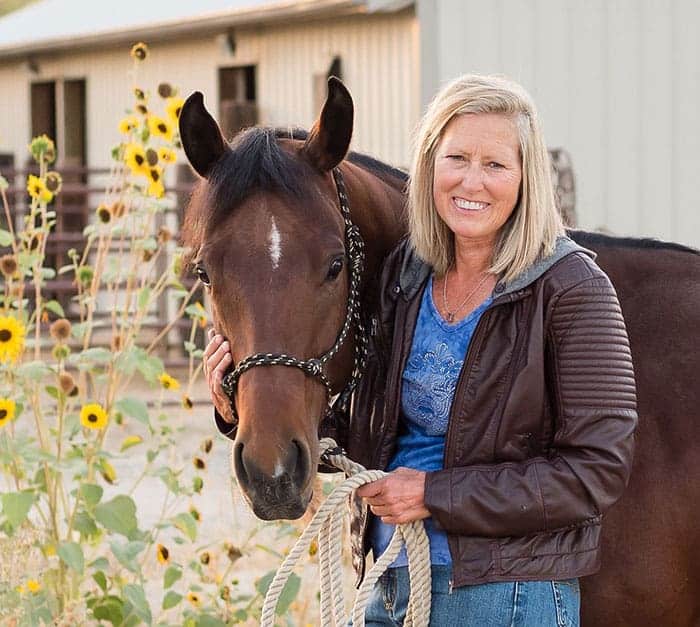Recycling Compost as Horse Bedding

Inspired by the dairy industry’s composted bedding use, Caitlin Youngquist, PhD, an extension educator for the University of Wyoming, recently worked with several equine facilities in Washington state to make and test compost as an alternative bedding material in a project funded by Western Sustainable Agriculture Research and Education and managed by the Snohomish Conservation District.
Younquist collaborated with a commercial composting company, O2 Compost, and several horse owners.
“Think of composting as ‘biological recycling,’” says Youngquist. “The beneficial microbes (bacteria and fungi) in the compost pile eat the raw manure and urine and convert a waste product into a useful product. When done correctly, the compost process reaches very high temperatures and kills any (harmful) pathogens, parasites, or weed seeds that may have been in the raw material.
“It is darker in color than new wood shavings or sawdust,” she says. “It is highly absorbent and has a pleasant ‘earthy’ odor that does not attract flies. The composted bedding is also very low in dust, which is a benefit for horses and humans with dust sensitivities. Because the composted bedding retains some moisture from the compost process, it can be more challenging to use in wet climates. In a dry climate, the extra moisture in the bedding may be beneficial for hoof health and dust abatement.”
Youngquist notes that horse owners often report that adding composted bedding in with some clean bedding works best.
“In our research, we found that composted bedding worked best when mixed about half-and-half with new shavings or sawdust,” she says. “This would vary seasonally based on how wet the compost was. One of the common complaints was that it was more difficult to see the wet (urine) spots in the stall with the darker (compost) bedding.”
Youngquist says, anecdotally, horse owners reported a decrease in respiratory and skin irritation in horses, presumably due to less dust in the air and on the skin with compost as bedding, and two owners reported an improvement in rain rot and scratches (i.e., pastern dermatitis).
“We don’t know why this is, but perhaps it had to do with a change in the microbial activity on the skin due to the beneficial bacteria and fungi” that help breakdown the waste products into composted bedding, she said.
Find more information about Youngquist’s research at betterground.org/composted-manure-and-stall-bedding-pilot-project.

Written by:
Alayne Blickle
Related Articles
Stay on top of the most recent Horse Health news with












